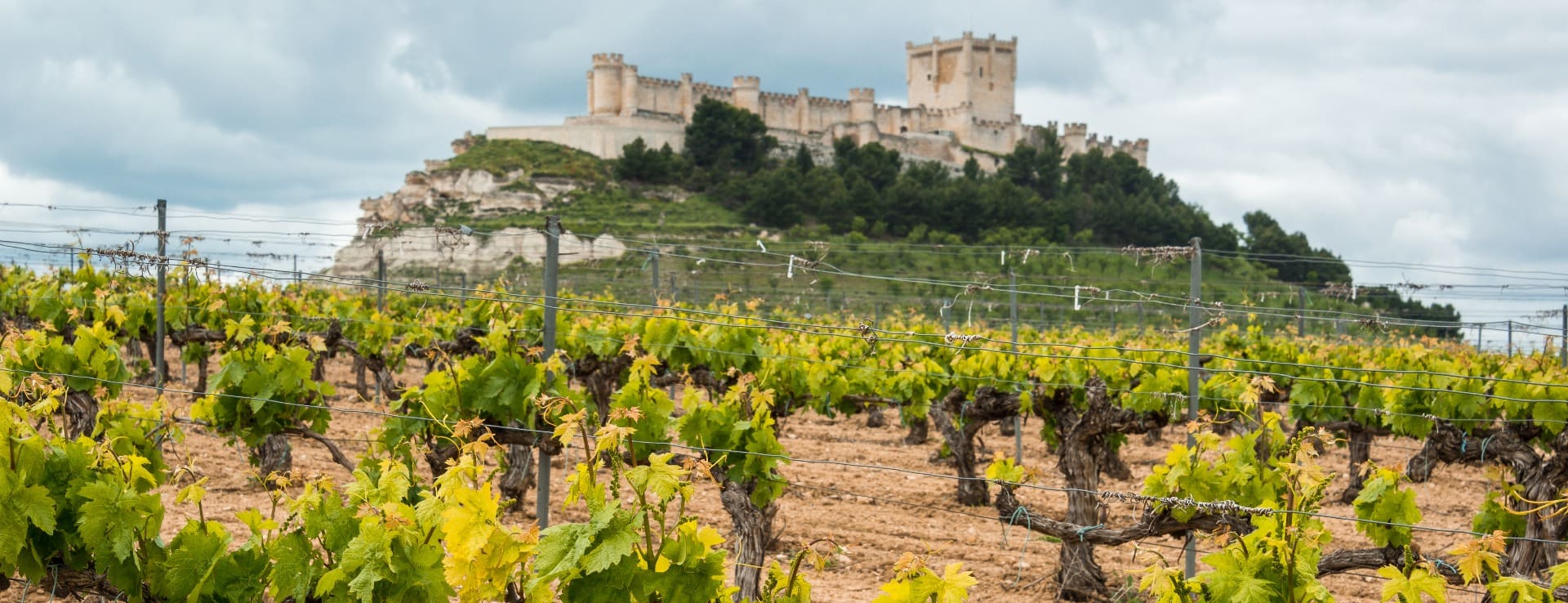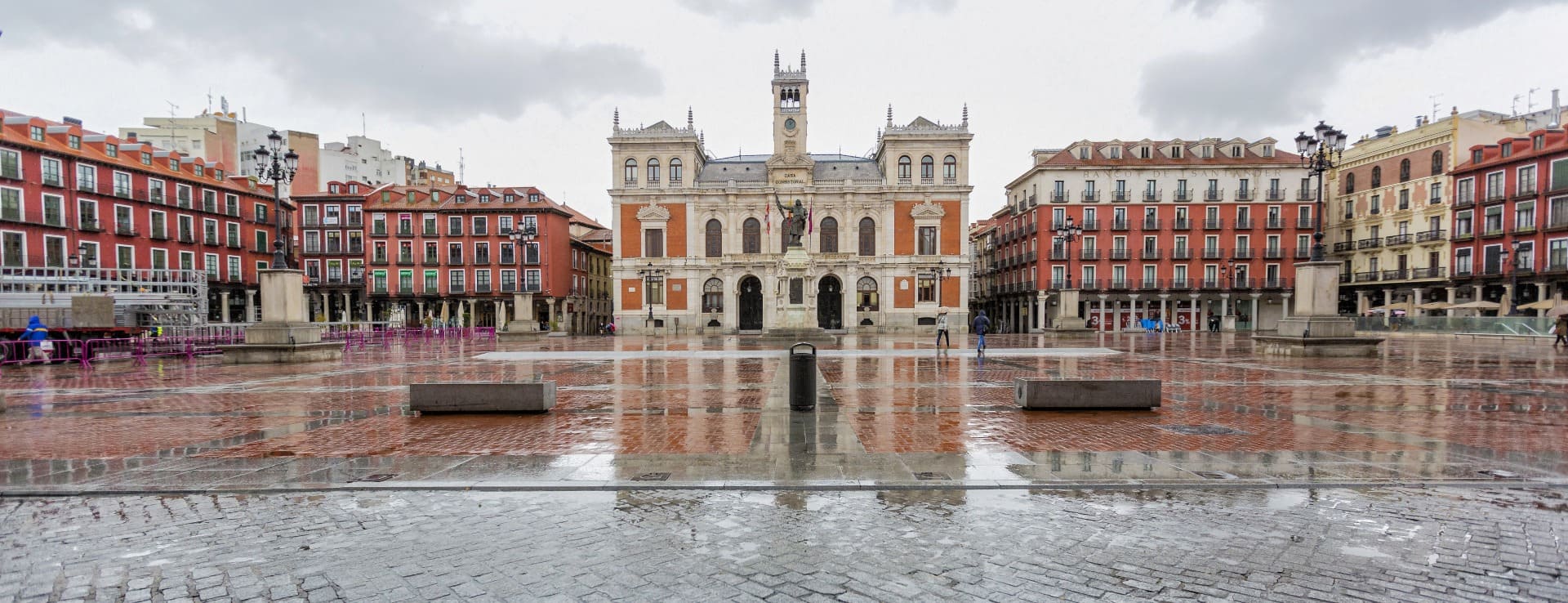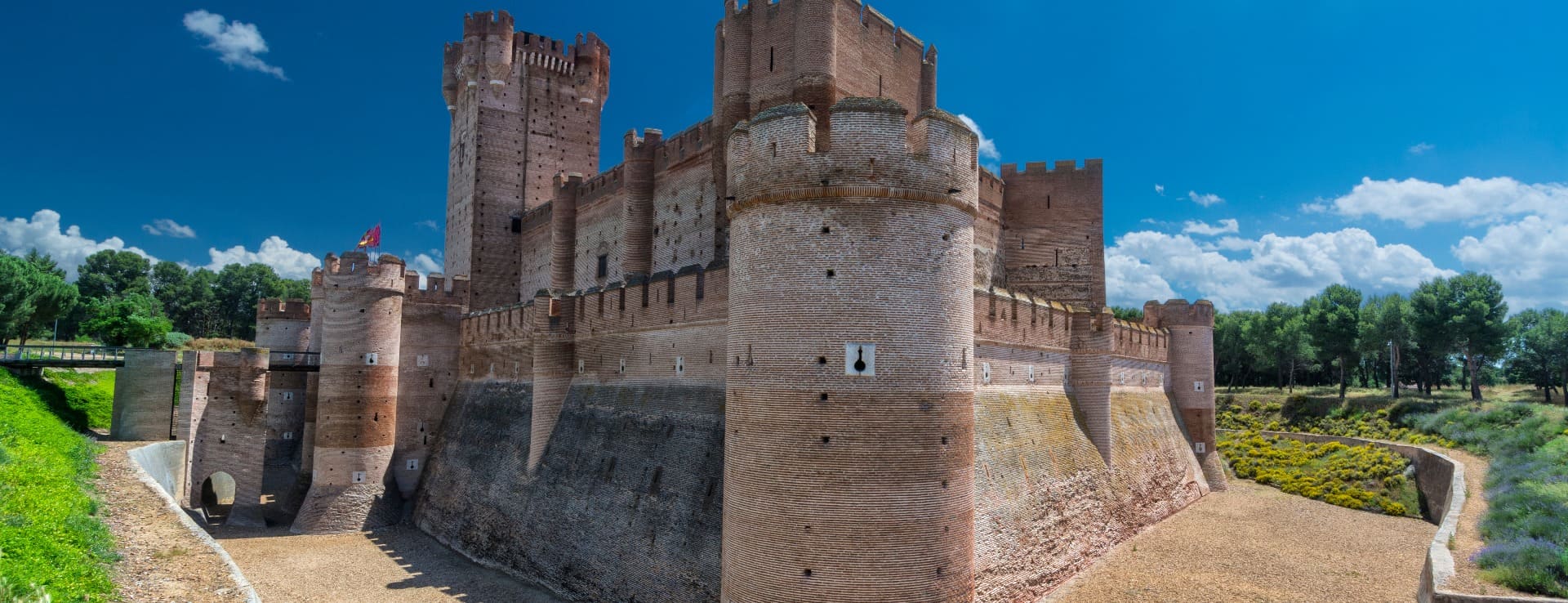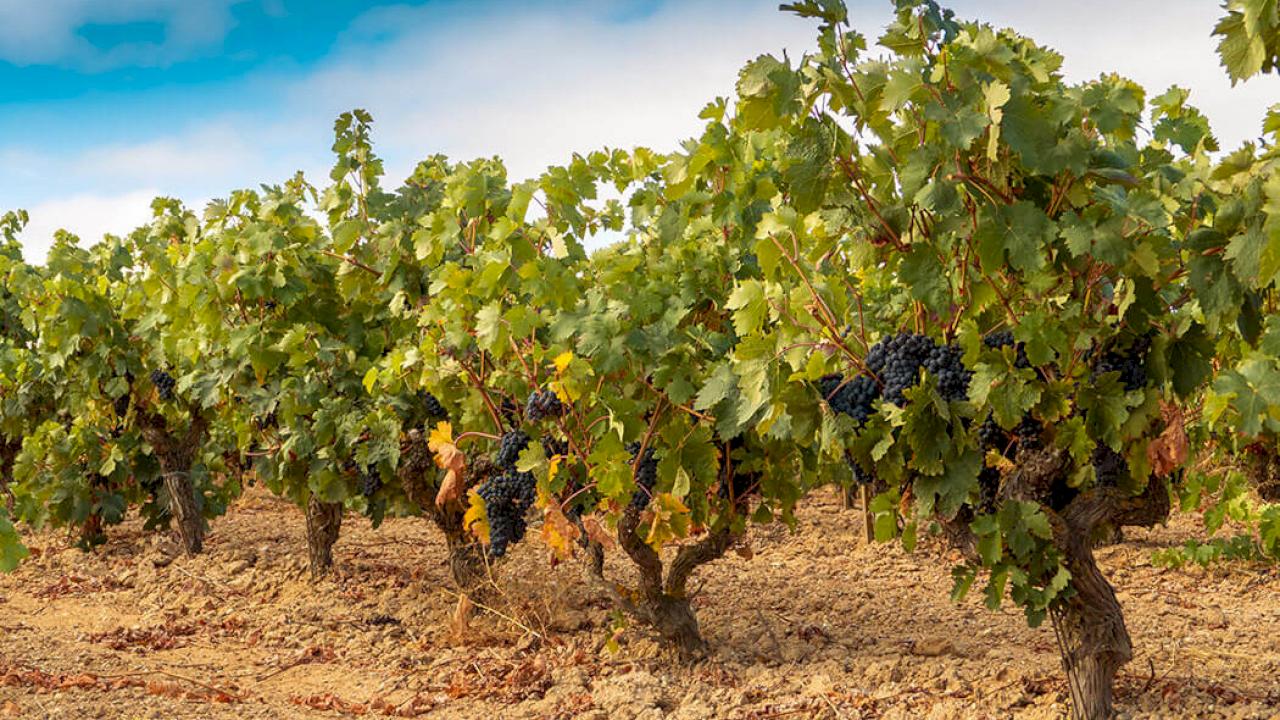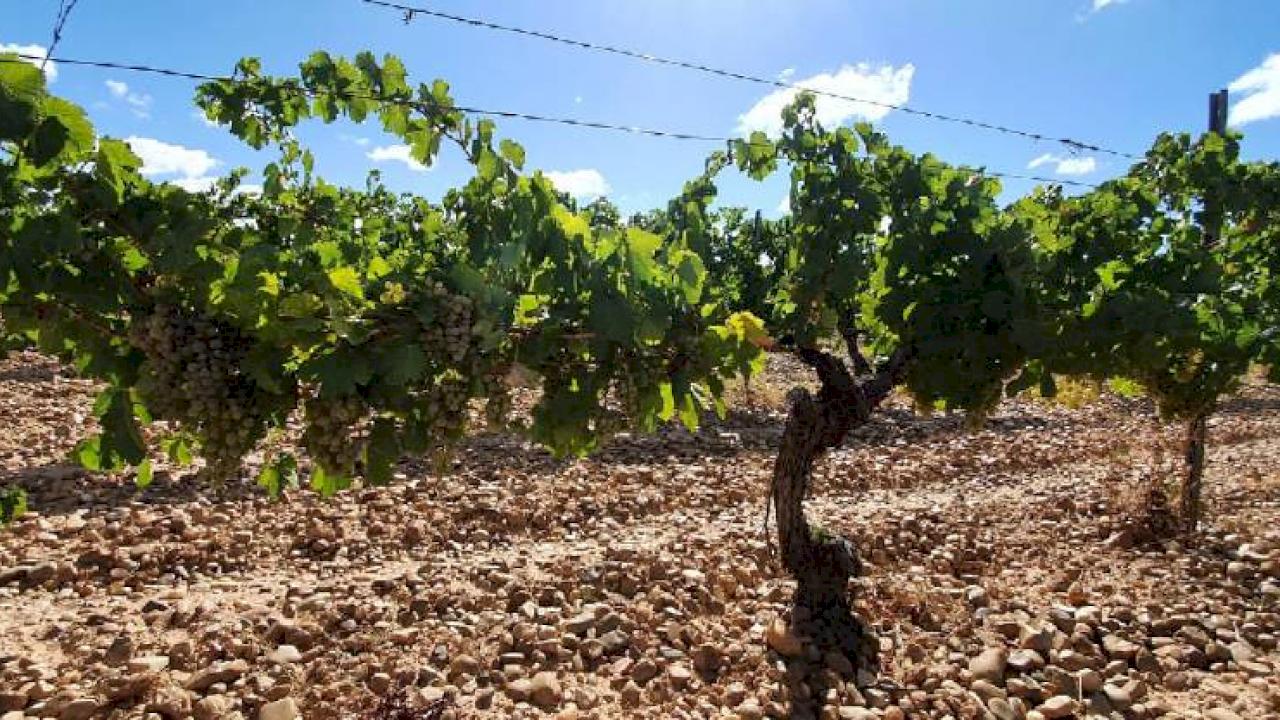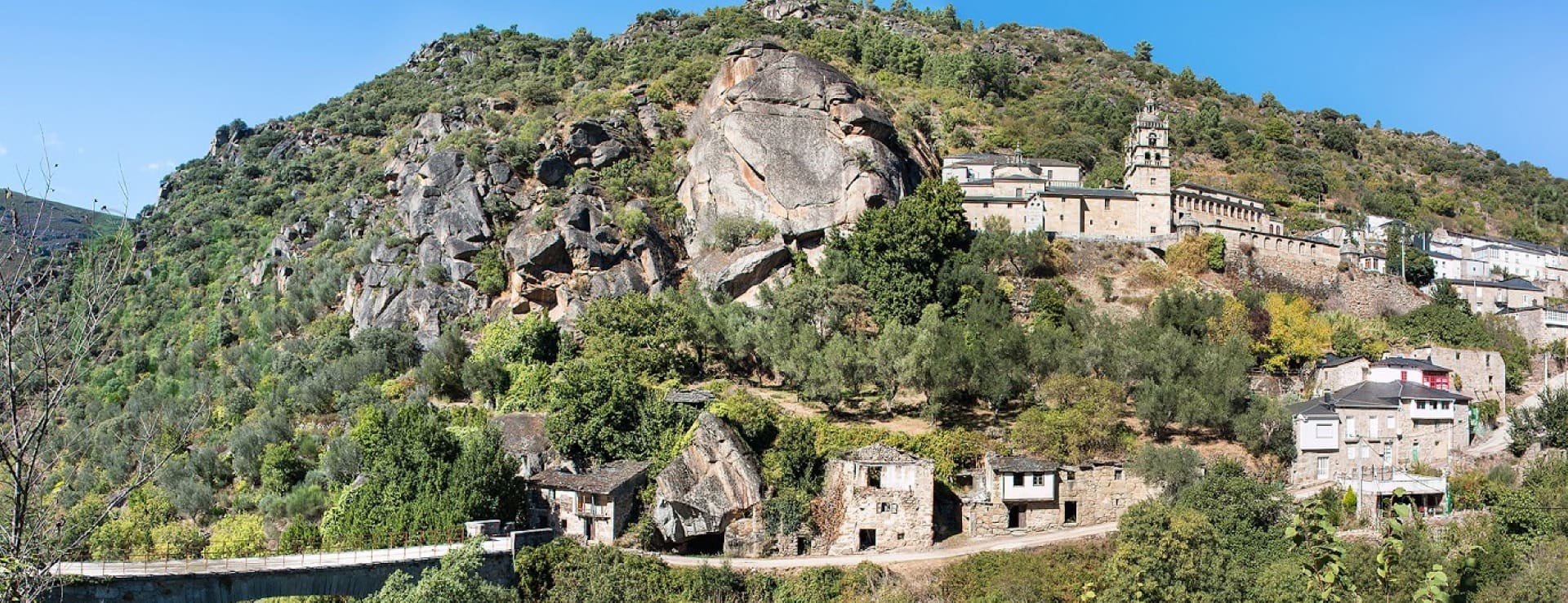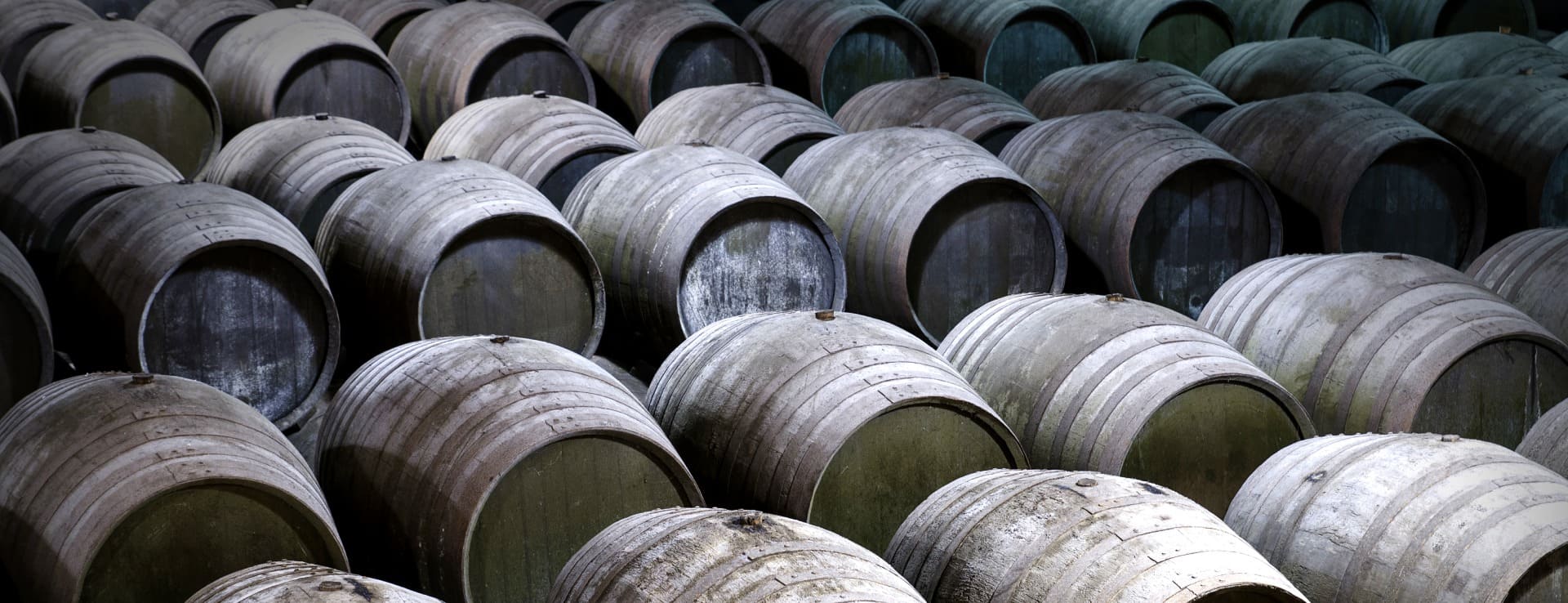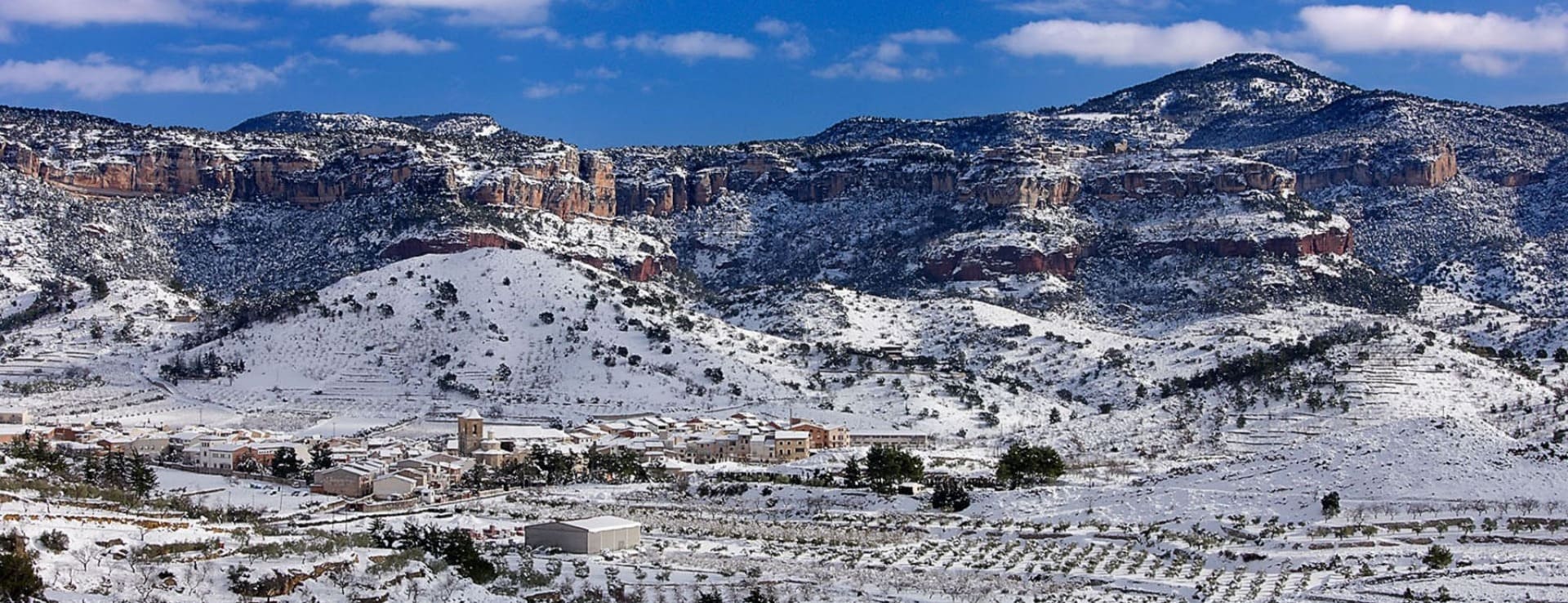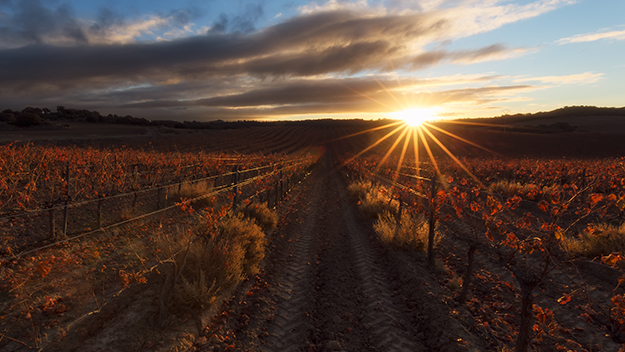Find your winery or vineyard
6 Wineries and Vineyards for sale in Valladolid
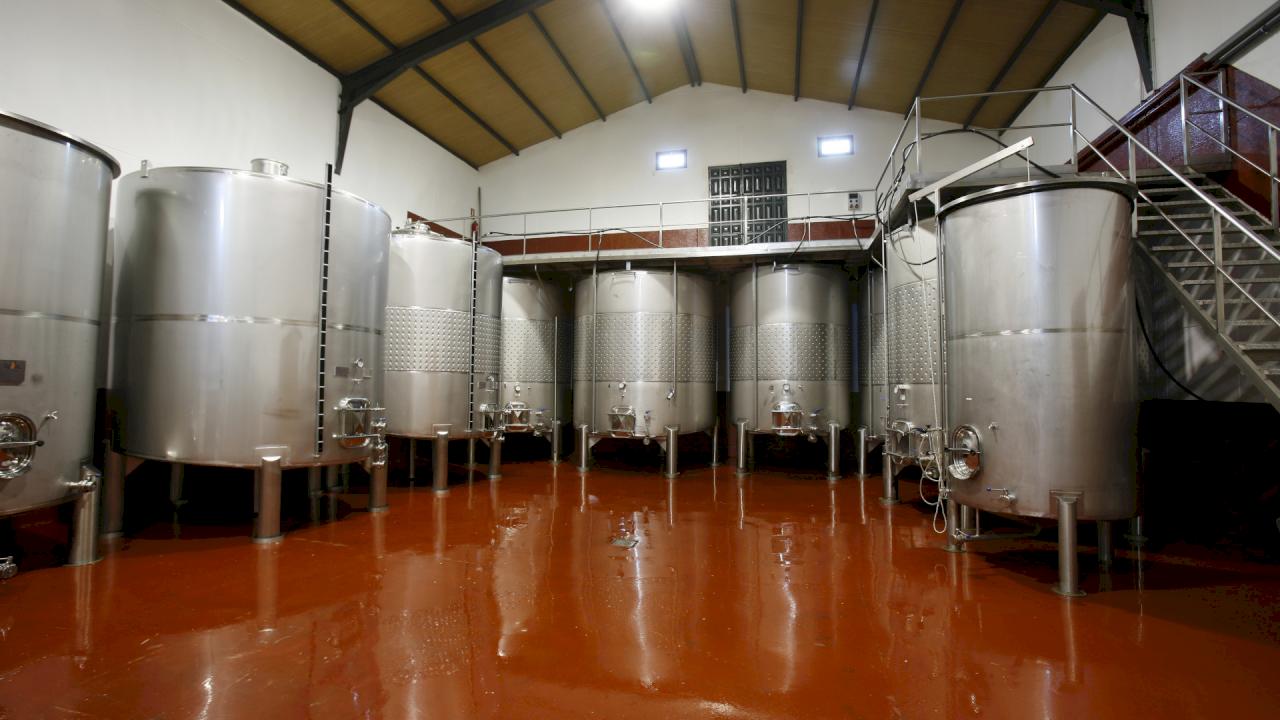
Functional winery with vineyard in DO Ribera del Duero.
Winery with vineyards of the Tempranillo and Cabernet Sauvignon varieties, in the DO Ribera del Duero region.
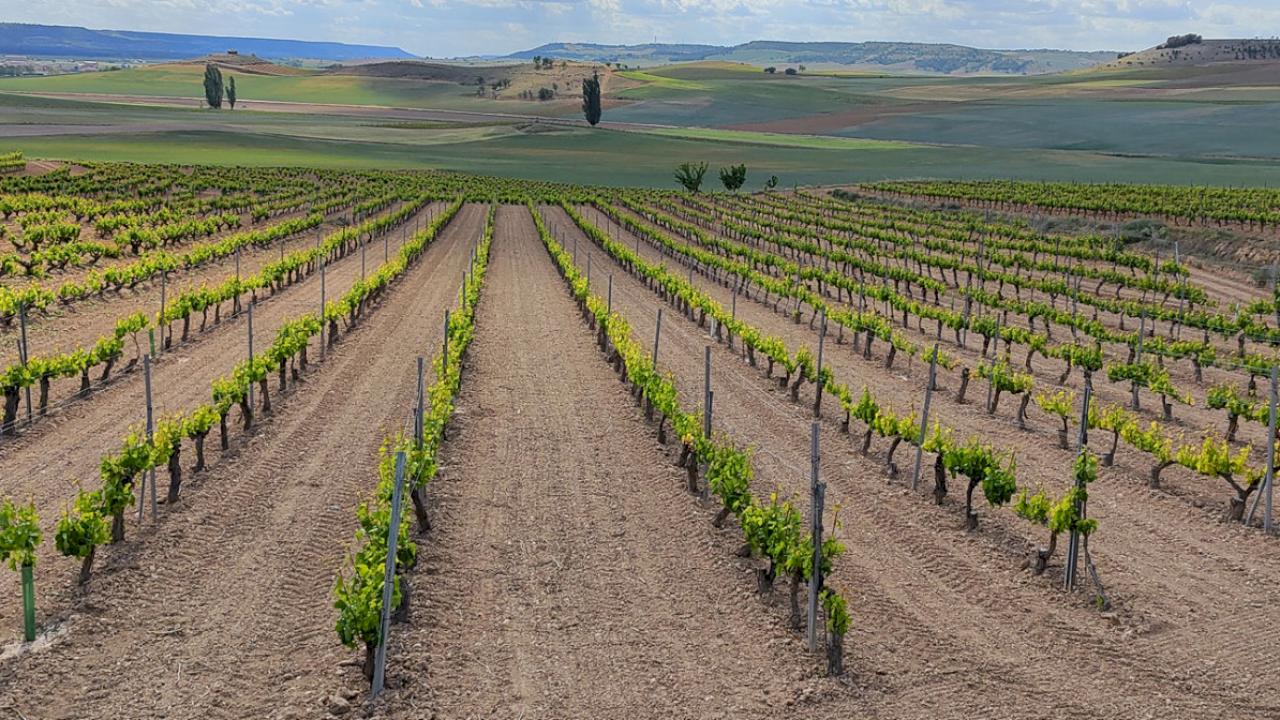
Small winery in the heart of Ribera del Duero with 4 hectares of vineyards.
DO Ribera del Duero
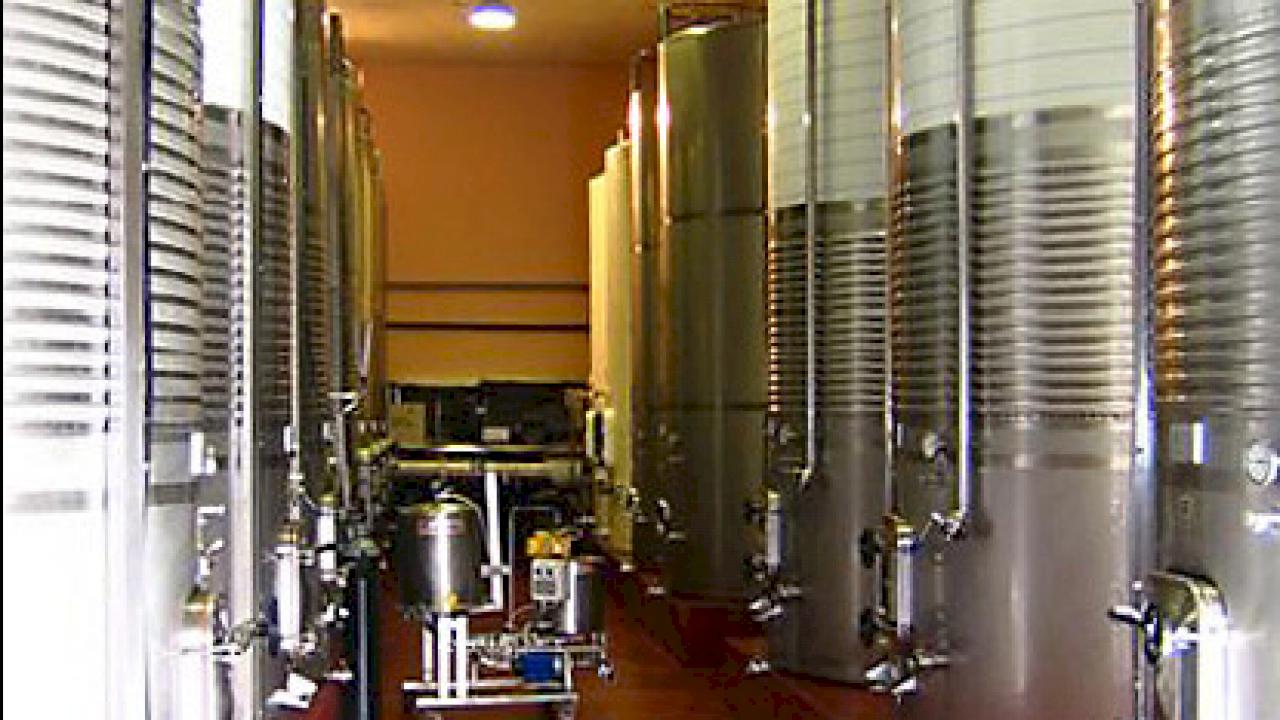
Winery of Tempranillo grape for sale in D.O. Ribera del Duero.
Medium-size family-run winery located in the Ribera del Duero part belonging to Valladolid. It was built in 2000 and almost all vineyards are rented.
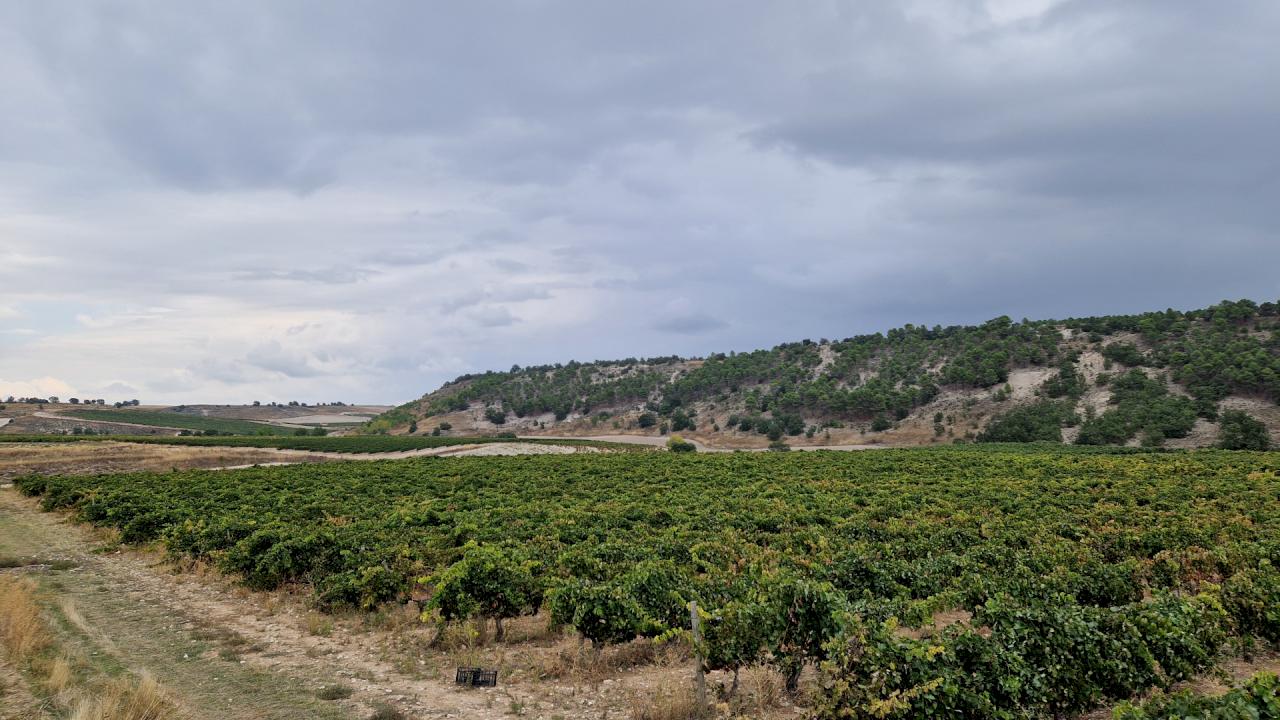
5 hectares of tempranillo vineyard in Pesquera de Duero.
DO Ribera del Duero.
Infographic of the Denomination of Origin
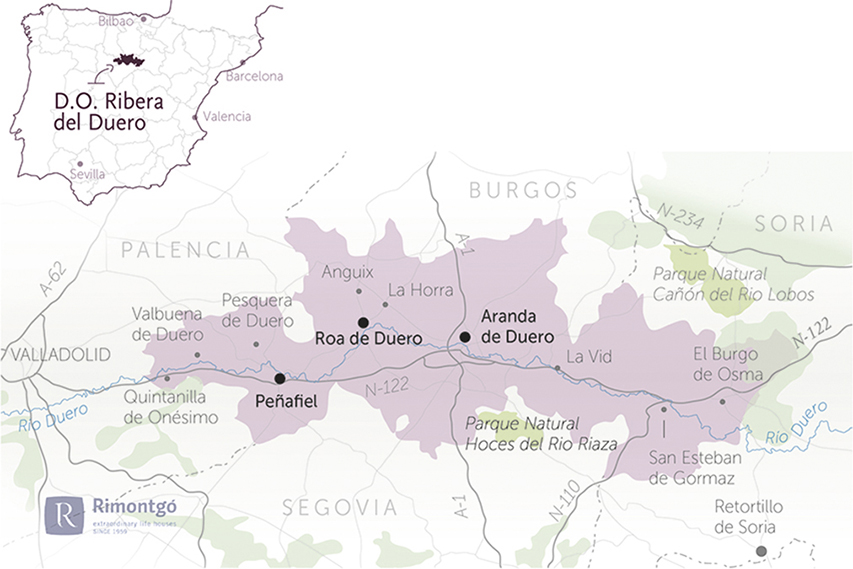
Change to imperial units (ft2, ac, °F)Change to international units (m2, h, °C)
D.O. year of foundation:
1982
Number of wineries (2017):
280
Total surface area:
22.040 ha54.461 ac
Maximum production allowed:
7.000 kg/ha6.245 lb/ac
Altitude of the vineyards:
Min: 750m
Max: 1.000m
Min: 2.461ft
Max: 3.281ft
Temperature:
Min: -20º
Max: 42º
Min: -4°F
Max: 108°F
Yearly hours of sun:
2.400
Yearly rainfall:
500 l/m246 l/ft2
Valladolid
The province of Valladolid is located in the centre of the community of Castile and León, in the Northwest of the Iberian Peninsula. It borders the provinces of Burgos, Palencia, León, Zamora, Salamanca, Ávila and Segovia. It has 225 municipalities, including the capital of the same name and other equally important localities, such as Laguna de Duero, Arroyo de la Encomienda, La Cistérniga, Zaratán, Simancas, Aldeamayor de San Martín, Santovenia de Pisuerga or Boecillo.
HISTORY OF WINE
In the necropolis of the vaccaei site of Pintia (Padilla de Duero, Peñafiel), which dates from the 4th century BC, trousseaus related to the ritual of wine have been found. Subsequently, the Romans were the great promoters of the cultivation of the vine, work that would complete the monastic orders present throughout the territory from the tenth century. One of the key moments for Ribera del Duero wines was the foundation, in the 12th century, of the Cistercian Monastery of Santa María de Valbuena. These Cluny monks brought with them vines from French Burgundy. The noble Castilian Sancho Ansúrez also founded the monastery of Santa María de Retuerta, of the Premonstratense Order, which would favour cultivation over large areas of land.
In 1295 the grape harvest was regulated and, from the 15th century onwards, the production and quality of the wine began to be controlled. In 1345 the Ordinance of Peñafiel saw the light that prohibited, depending on the exhaustion of the harvest, the entrance of foreign wines. The excessive division of the vineyards and the need to protect them conditioned a new model of agricultural organization based on payments (set of vineyards of different owners who gathered to facilitate monitoring). From the sixteenth to the eighteenth century, the vine was already a key crop in the economy of Valladolid, but when phylloxera fell on the territories of the Duero in 1898, together with the Spanish loss of the colonies of Cuba and the Philippines, a whole generation was left without wine.
In the middle of the 19th century a triggering event took place in Ribera del Duero: the implantation of Bodegas Vega Sicilia in Valbuena de Duero. The need for early vines adapted to the cold motivated Eloy Lecanda to import French strains of Cabernet Sauvignon, Malbec and Merlot that would join the native Tinta Fina of the country already planted in the area. To this is added the implementation of the Bordeaux production model. There are also cooperative wineries such as Peñafiel, founded in 1927, which opted for varieties such as 'clarete'. From the 1970s onwards, the germ was forged which, a few years later, led to the current Designation of Origin and the production of wines of recognised international prestige. In 1992, the great American critic Robert Parker said he had found the Spanish Pétrus.
WINES AND WINERIES
The Designation of Origin with the most vineyards in the area is the DO Rueda, which was also the first to be approved in Castile and León, after years of work to achieve recognition of its famous white wines and its native grape variety: the Verdejo. The province of Valladolid also has 19 municipalities under the DO Ribera del Duero and accounts for approximately a third of the DO Toro, in addition to comprising the DO Cigales and the DO Tierra de León.
The most outstanding winery in Valladolid is Vega Sicilia, founded in 1864, which is also the oldest in the DO. Also Protos (1928), whose wine Ribera del Duero gave name to the whole area and Bodegas Alejandro Fernandez, which has the famous wine Pesquera. Then there would be Dominio de Pingus (Danish Peter Siseck), Bodegas Emilio Moro, Bodegas Cepa 21 (Emilio Moro Group), Bodegas Matarromera, Bodegas Emina (Matarromera Group), Pago de Carraovejas, Dehesa de los Canónigos, Comenge, Legaris (Codorníu Group), Hacienda Monasterio, Viñedos del Jaro (Osborne Group), Bodegas Alión (Vega Sicilia Group), Bodegas Arzuaga Navarro, Valtravieso, Resalte, Pingón, Montecastro, Montebaco, Bodegas Aalto. Outside the DO Ribera del Duero are Bodegas Mauro, by the oenologist Mariano García, and Abadía de Retuerta.
POINTS OF INTEREST
Valladolid has a rich legacy, with countless castles and fortresses, if it is considered that the province was the capital of the Castilian court during the reigns of Charles I, Philip II and Philip III. It has two UNESCO World Heritage Sites in the Memory of the World category: the Treaty of Tordesillas and the General Archive of Simancas. In addition, its capital boasts an important architectural heritage and one of the most important sculpture museums in Europe. The province is especially famous for its Easter processions, both in the capital and in the towns of Medina de Rioseco and Medina del Campo, and every year hosts the Seminci Film Festival. The gastronomy of Valladolid is famous and forceful, based on suckling lambs, piglets, black puddings, breads, cheeses, soups and legumes, sprinkled with good wines.
Discover more wineries and vineyards for sale in these wine regions in Spain
Subscribe to our mailing list to receive news about wineries and vineyards.

